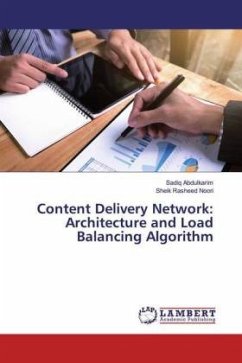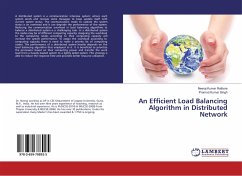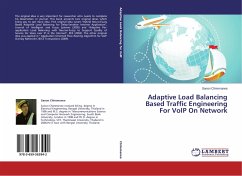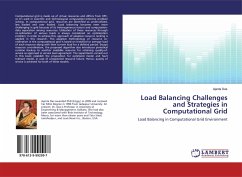Expert authors show network professionals how to deliver richer content securely and at high speeds - a total resource!
Examines in detail common uses of content switching to improve video streaming, wireless gateway load balancing and intrusion detection system load balancing.
Running case study throughout the book shows how these key technologies are used in one company to optimize its Web site.
Authors are leading content switching authorities from Nortel.
Both network and Web performance are topics of major concern to businesses who increasingly depend on the Internet as a business channel. As CDNs (Content Delivery Networks) become a popular choice for both improving Web performance and being able to serve richer Internet content, network managers and network engineers need to learn about the underlying technologies like caching, load balancing and the use of firewalls which make increased performance possible. Content switching is the umbrella term for the technologies (web caching and re-direction, server load balancing, and firewalls to protect your content from unauthorized modification) which make Content Delivery Networks possible. The Authors explain these key technologies that are used to improve Web performance and will allow companies to serve richer web content securely. A running example throughout the book shows how these technologies are used in one company to optimize its Web site. Matthew Syme is Product Specialist for the Alteon Content Switches at Nortel Networks. Phil Goldie is a Systems Engineer at Nortel. Goldie works with Nortel customers implementing many of the applications presented in this book. Product Description
Both network and Web performance are topics of major concern to businesses who increasingly depend on the Internet as a business channel. As CDNs (Content Delivery Networks) become a popular choice for both improving Web performance and being able to serve richer Internet content, network managers and network engineers need to learn about the underlying technologies like caching, load balancing and the use of firewalls which make increased performance possible. Content switching is the umbrella term for the technologies (web caching and re-direction, server load balancing, and firewalls to protect your content from unauthorized modification) which make Content Delivery Networks possible. The Authors explain these key technologies that are used to improve Web performance and will allow companies to serve richer web content securely. A running example throughout the book shows how these technologies are used in one company to optimize its Web site.
Backcover
Enrich the user experience while keeping control of your network
Networking professionals: At last, comprehensive coverage of content switching technology is in your hands! Optimizing Network Performance with Content Switching: Server, Firewall, and Cache Load Balancing, by topic experts Matthew Syme and Philip Goldie, provides sharp insights into this wide-ranging, rapidly changing technology. You'll learn the concepts, the background, and the architectures of content switching, as well as how it works and where and why it should be deployed to maximize the performance of your networks and servers. Fueled by increasing bandwidth and ever-richer content, this technology is fast becoming a standard in enterprise and ISP networks. Inside you'll find:
Full explanations of TCP/IP, HTTP, DNS, and other network fundamentals
Vendor-independent coverage of the key content switching applications--server load balancing, Web cache redirection, application redirection, firewall load balancing, and more!
Detailed diagrams that illustrate clearly the deployments and topologies for all applications and variations covered in the book
A running fictional case study that translates theory into practice, with all applications demonstrated in example implementations
Advanced topics including TCP/IP flows and sessions, delayed binding, URL parsing, cookie persistence, server health checking, and load balancing metrics
The advanced topics in Optimizing Network Performance with Content Switching are tailored for engineers with layer 2 and layer 3 experience looking for a comprehensive explanation of the inner workings of content switching. This book is also ideal for managers, application developers, security administrators, sales people, and other professionals who require a firm understanding of the basics of the technology.
Preface.
1. Introduction to Content Switching.
The Evolution of Layer 2 and Layer 3 Networks. Summary.
2. Understanding Layer 2, 3, and 4 Protocols.
The OSI Seven Layer Model-What Is a Layer? Switching at Different Layers. Understanding Layer 4 Protocols. Transport Control Protocol (TCP). User Datagram Protocol (UDP). Virtual Router Redundancy Protocol (VRRP). Summary.
3. Understanding Application Layer Protocols.
HyperText Transfer Protocol (HTTP). File Transfer Protocol (FTP). Real Time Streaming Protocol (RTSP). Secure Sockets Layer (SSL). Summary.
4. The Concepts of Content Switching.
Virtual Services and Application Redirection. Resources and Real Servers. Frames, Packets, and Sessions. Deep Packet Inspection. Summary.
5. Basic Server Load Balancing.
Why Load Balance Servers? Topologies of Server Load Balancing. Layer 4 Load Balancing Metrics. Server Health Checking. Summary. Case Study Layer-4 Server Load Balancing.
6. Content-Aware Server Load Balancing.
What Is Layer 7 Server Load Balancing? Why Use Layer 7 Server Load Balancing? Dealing with Layer 7 Traffic. HTTP URL Parsing and Load Balancing. HTTP Header Load Balancing. HTTP Cookie Load Balancing. Load Balancing FTP. Load Balancing DNS at Layer. Load Balancing RTSP Streaming Media. Summary. Case Study: Content-Aware Server Load Balancing.
7. Persistence, Security, and the Internet.
Internet Service Providers-Proxying and Traffic Volumes. IP Address Hashing. Cookie-Based Persistence. SSL. Summary. Case Study: Persistence.
8. Application Redirection.
The Requirement for Application Redirection. VIP-Based SLB vs Application Redirection. Web Cache Redirection (WCR). WCR. Security Redirection. Router/Link Load Balancing. Summary. Case Study: Application Redirection.
9. Firewall and VPN Load Balancing.
Why Load Balance Firewalls and VPN Switches? Firewall Overview. Deploying Firewall Load Balancing. Policy-Based Firewall Load Balancing. VPN and MAC Persistence. Summary. Case Study: Firewall and VPN Load Balancing.
10. The Architecture of a Content Switch.
Typical Layer 2 and Layer 3 Architecture Considerations. Why Content Switching Is Different. What Makes a Good Content Switch? Different Approaches. Where to Next? Associated Hardware. Summary.
Index.
PLEASE PROVIDE COURSE INFORMATION
PLEASE PROVIDE
Examines in detail common uses of content switching to improve video streaming, wireless gateway load balancing and intrusion detection system load balancing.
Running case study throughout the book shows how these key technologies are used in one company to optimize its Web site.
Authors are leading content switching authorities from Nortel.
Both network and Web performance are topics of major concern to businesses who increasingly depend on the Internet as a business channel. As CDNs (Content Delivery Networks) become a popular choice for both improving Web performance and being able to serve richer Internet content, network managers and network engineers need to learn about the underlying technologies like caching, load balancing and the use of firewalls which make increased performance possible. Content switching is the umbrella term for the technologies (web caching and re-direction, server load balancing, and firewalls to protect your content from unauthorized modification) which make Content Delivery Networks possible. The Authors explain these key technologies that are used to improve Web performance and will allow companies to serve richer web content securely. A running example throughout the book shows how these technologies are used in one company to optimize its Web site. Matthew Syme is Product Specialist for the Alteon Content Switches at Nortel Networks. Phil Goldie is a Systems Engineer at Nortel. Goldie works with Nortel customers implementing many of the applications presented in this book. Product Description
Both network and Web performance are topics of major concern to businesses who increasingly depend on the Internet as a business channel. As CDNs (Content Delivery Networks) become a popular choice for both improving Web performance and being able to serve richer Internet content, network managers and network engineers need to learn about the underlying technologies like caching, load balancing and the use of firewalls which make increased performance possible. Content switching is the umbrella term for the technologies (web caching and re-direction, server load balancing, and firewalls to protect your content from unauthorized modification) which make Content Delivery Networks possible. The Authors explain these key technologies that are used to improve Web performance and will allow companies to serve richer web content securely. A running example throughout the book shows how these technologies are used in one company to optimize its Web site.
Backcover
Enrich the user experience while keeping control of your network
Networking professionals: At last, comprehensive coverage of content switching technology is in your hands! Optimizing Network Performance with Content Switching: Server, Firewall, and Cache Load Balancing, by topic experts Matthew Syme and Philip Goldie, provides sharp insights into this wide-ranging, rapidly changing technology. You'll learn the concepts, the background, and the architectures of content switching, as well as how it works and where and why it should be deployed to maximize the performance of your networks and servers. Fueled by increasing bandwidth and ever-richer content, this technology is fast becoming a standard in enterprise and ISP networks. Inside you'll find:
Full explanations of TCP/IP, HTTP, DNS, and other network fundamentals
Vendor-independent coverage of the key content switching applications--server load balancing, Web cache redirection, application redirection, firewall load balancing, and more!
Detailed diagrams that illustrate clearly the deployments and topologies for all applications and variations covered in the book
A running fictional case study that translates theory into practice, with all applications demonstrated in example implementations
Advanced topics including TCP/IP flows and sessions, delayed binding, URL parsing, cookie persistence, server health checking, and load balancing metrics
The advanced topics in Optimizing Network Performance with Content Switching are tailored for engineers with layer 2 and layer 3 experience looking for a comprehensive explanation of the inner workings of content switching. This book is also ideal for managers, application developers, security administrators, sales people, and other professionals who require a firm understanding of the basics of the technology.
Preface.
1. Introduction to Content Switching.
The Evolution of Layer 2 and Layer 3 Networks. Summary.
2. Understanding Layer 2, 3, and 4 Protocols.
The OSI Seven Layer Model-What Is a Layer? Switching at Different Layers. Understanding Layer 4 Protocols. Transport Control Protocol (TCP). User Datagram Protocol (UDP). Virtual Router Redundancy Protocol (VRRP). Summary.
3. Understanding Application Layer Protocols.
HyperText Transfer Protocol (HTTP). File Transfer Protocol (FTP). Real Time Streaming Protocol (RTSP). Secure Sockets Layer (SSL). Summary.
4. The Concepts of Content Switching.
Virtual Services and Application Redirection. Resources and Real Servers. Frames, Packets, and Sessions. Deep Packet Inspection. Summary.
5. Basic Server Load Balancing.
Why Load Balance Servers? Topologies of Server Load Balancing. Layer 4 Load Balancing Metrics. Server Health Checking. Summary. Case Study Layer-4 Server Load Balancing.
6. Content-Aware Server Load Balancing.
What Is Layer 7 Server Load Balancing? Why Use Layer 7 Server Load Balancing? Dealing with Layer 7 Traffic. HTTP URL Parsing and Load Balancing. HTTP Header Load Balancing. HTTP Cookie Load Balancing. Load Balancing FTP. Load Balancing DNS at Layer. Load Balancing RTSP Streaming Media. Summary. Case Study: Content-Aware Server Load Balancing.
7. Persistence, Security, and the Internet.
Internet Service Providers-Proxying and Traffic Volumes. IP Address Hashing. Cookie-Based Persistence. SSL. Summary. Case Study: Persistence.
8. Application Redirection.
The Requirement for Application Redirection. VIP-Based SLB vs Application Redirection. Web Cache Redirection (WCR). WCR. Security Redirection. Router/Link Load Balancing. Summary. Case Study: Application Redirection.
9. Firewall and VPN Load Balancing.
Why Load Balance Firewalls and VPN Switches? Firewall Overview. Deploying Firewall Load Balancing. Policy-Based Firewall Load Balancing. VPN and MAC Persistence. Summary. Case Study: Firewall and VPN Load Balancing.
10. The Architecture of a Content Switch.
Typical Layer 2 and Layer 3 Architecture Considerations. Why Content Switching Is Different. What Makes a Good Content Switch? Different Approaches. Where to Next? Associated Hardware. Summary.
Index.
PLEASE PROVIDE COURSE INFORMATION
PLEASE PROVIDE








